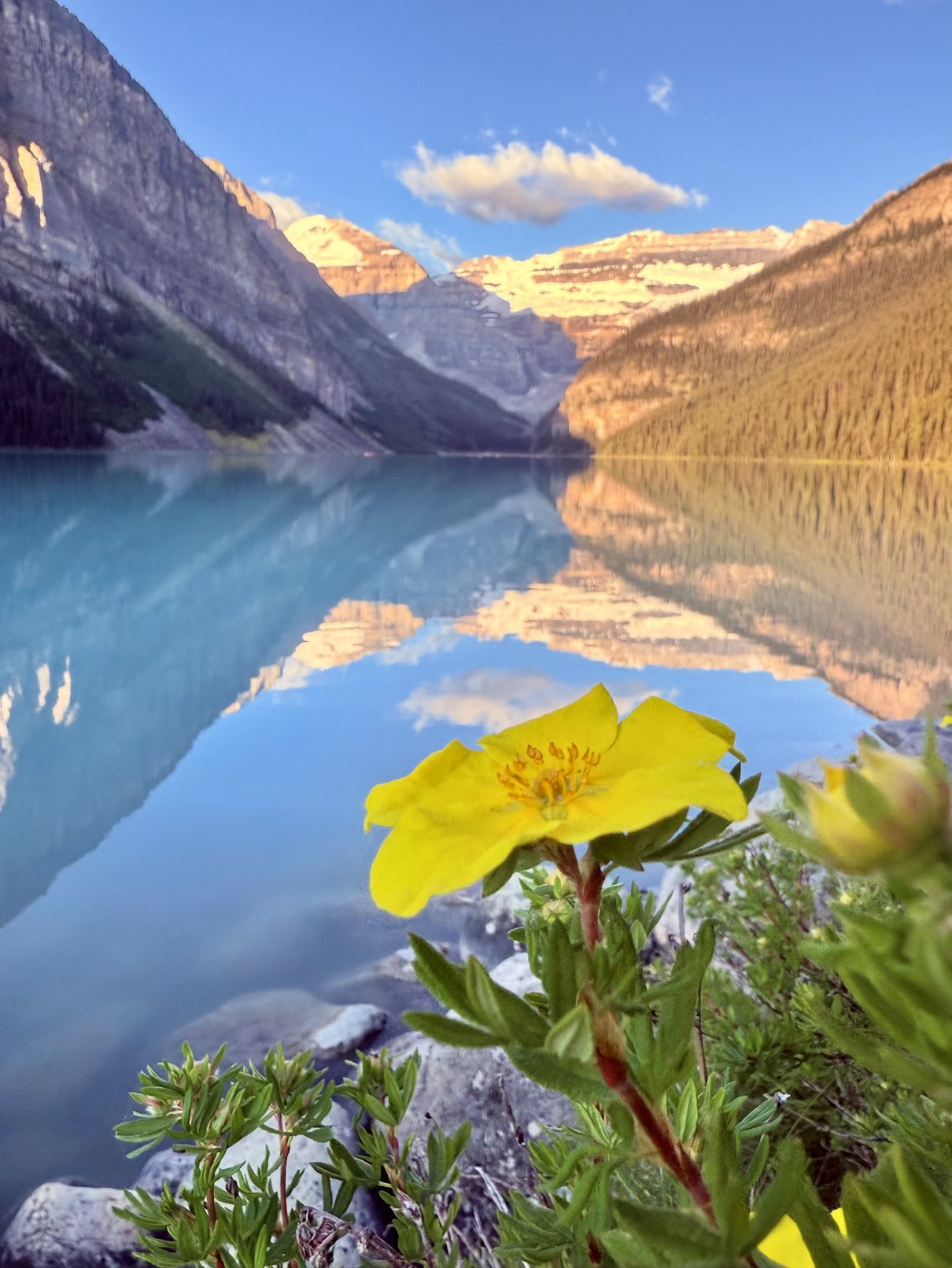Complete series:
- Banff – Moraine Lake
- Jasper – Skyline Trail
- Icefield Parkway
- Banff – Lake Louise
- Yoho – Iceline Trail
Intro
Arguably the most popular destination in the entire Canadian Rockies, Lake Louise (and its surrounding area) is world-renowned for its scenic beauty and historic legacy. This includes the century-old Fairmont Chateau Lake Louise hotel originally constructed by the Canadian Pacific Railway, and has remained (unsurprisingly) one of the most photographed hotels in the world.
Experiencing even more tourists than its (already-popular) nearby sibling, Moraine Lake, Lake Louise has greatly restricted private vehicle access and direct most tourists to use park shuttles for getting in/out. I couldn’t secure a shuttle ticket as I missed the reservation window while on another hike, so opted to try my luck by driving in early in the morning (6:30am), which fortunately secured me a parking spot for the day (along with fantastic sunrise view of the lake) that allowed for a leisure exploration of the area. Below is a rough map of the paths I followed for the day:

Lake Louise (Morning)
The delicately picturesque beauty of Lake Louise just after sunrise is difficult to put into words. The distant east-facing glacier reflects the morning sun back upon the lake, which then gradually gains full color as the sun rises further. I’d like to think if I was one of the hotel guests who, rather than slumbering like my peers, chose to paddle in the morning and able to witness the lake’s beauty from within, I would’ve made one of the best decisions of my life.








Fairview Lookout, just a short climb up the southern mountain from the lake offers great view of the lake and the Chateau from above.





Mirror Lake and Lake Agnes
The two lakes are located up the mountain north of Lake Louise. Mirror Lake is the smaller of the two and encountered first after the climb from Lake Louise shore. It is towered by a peak dubbed “Big Beehive” which I circled on the way to Lake Agnes, and later climbed up to the top.





Named after Susan Agnes Macdonald, the wife of Canada’s first Prime Minister, Sir John A. Macdonald (who’s generally well-respected, but criticized for the policies towards Chinese and indigenous people), after she visited the lake in 1886, Lake Agnes is a more popular destination for its larger size, and the availability of a “tea house“, which was originally constructed as a hiker refuge with the help of Swiss mountain guides, and still serves refreshments. The existence of such tea houses (there is one more in the Six Glacier area) in the Lake Louise area reflects the Alpine influence, and is quite unique amongst all the hikes in the Rockies.








Big Beehive
The climb up from Lake Agnes to the Big Beehive is somewhat strenuous with a series of switchbacks. The top of the Big Beehive is mostly flat, most areas offer partial vision for the Lake Agnes and Lake Louise (and the Chateau) obfuscated by trees. A few spots had more complete, stunning views, which are popular amongst both tourists and the critics that they (technically shouldn’t) feed.









Six Glaciers
Plain of Six Glaciers provides water source for Lake Louise. The hike to the plain offers views of the glaciers, back view of Lake Louise, and the surrounding mountains and valley below.





Lake Louise (Evening)
The return hike from the glaciers is most flat and around Lake Louise. With the evening sun already behind the glacier mountains, the water turns a more gentle, darker hue, with the Chateau well-illuminated.










There is a statue dedicated to the Swiss mountain guides next to the Chateau:

In 1899, CPR brought the first Swiss mountain guides to the Canadian Rockies, inspiring worldwide appreciation of Canada’s rich mountain heritage and sparking a mountaineering tradition that continues to this day.
Dedicated to the memory the Swiss mountain guides. October 1999
And it’s one of life’s greatest joy to continue that mountaineering tradition.
OG
